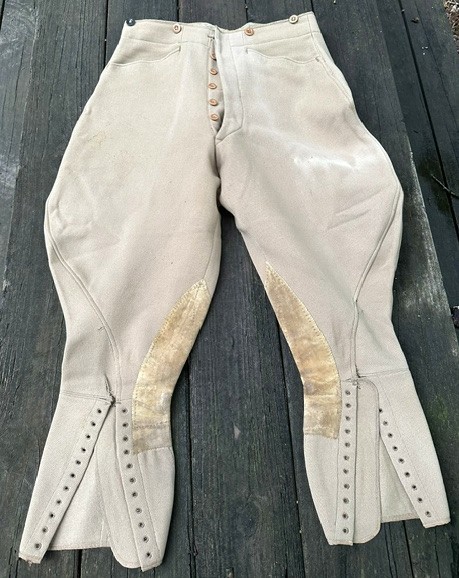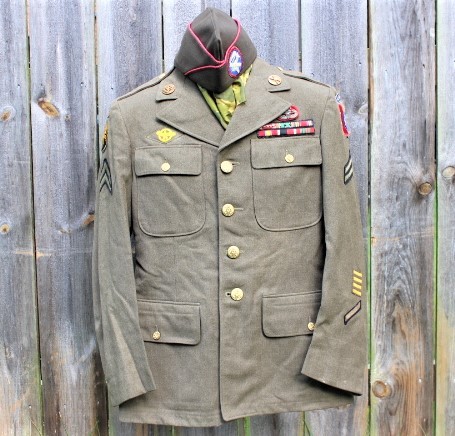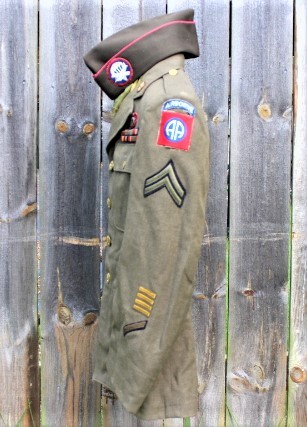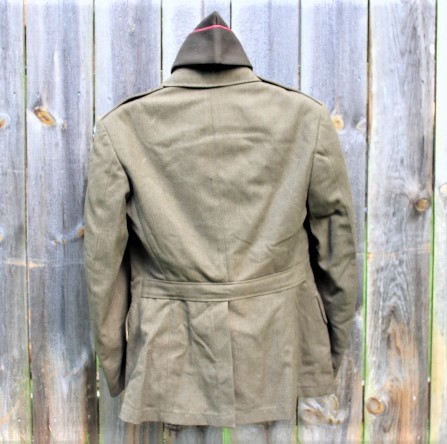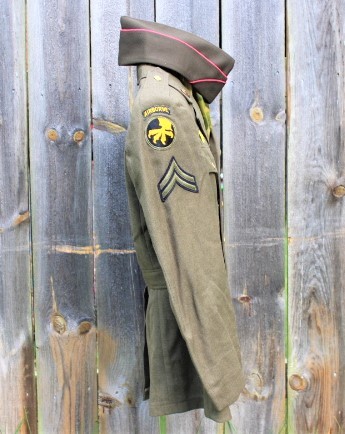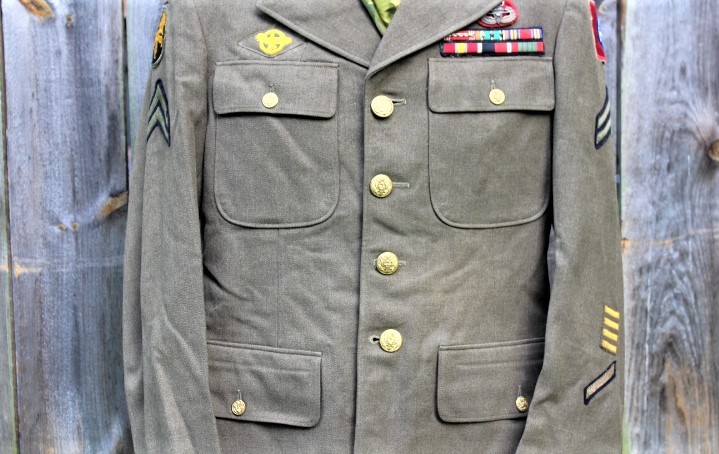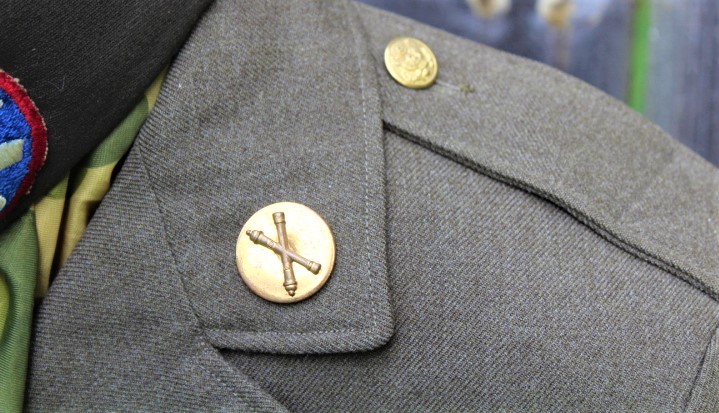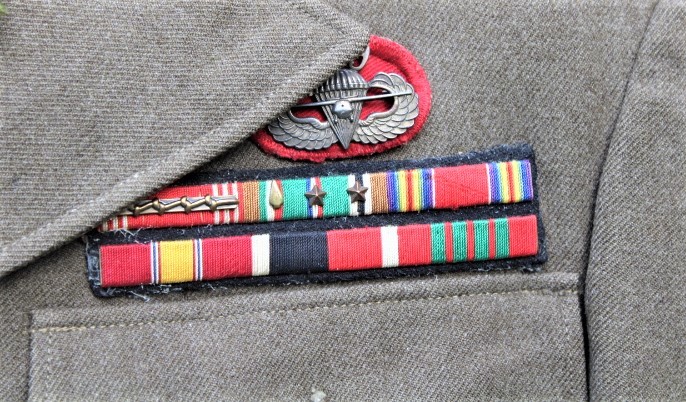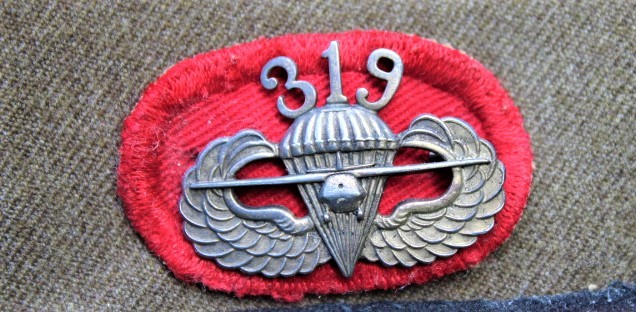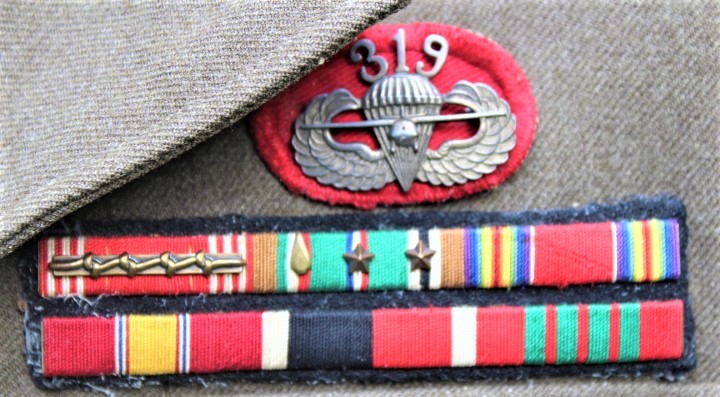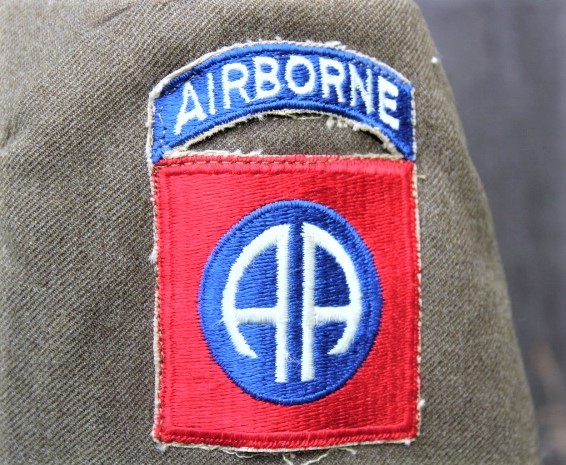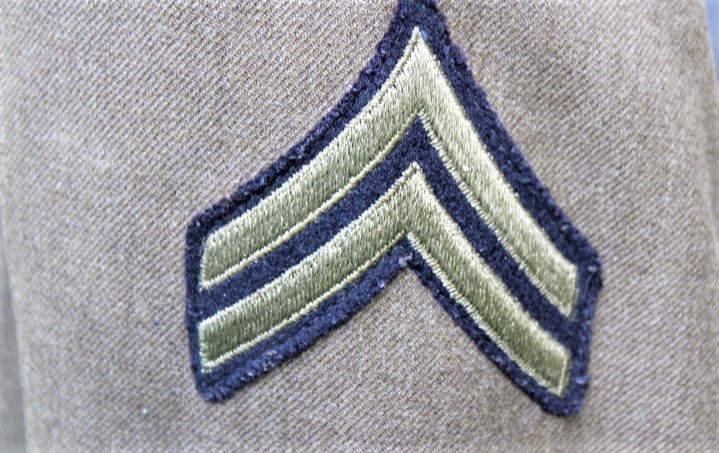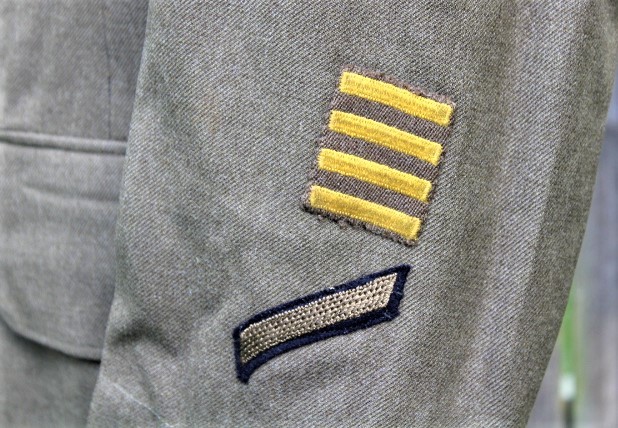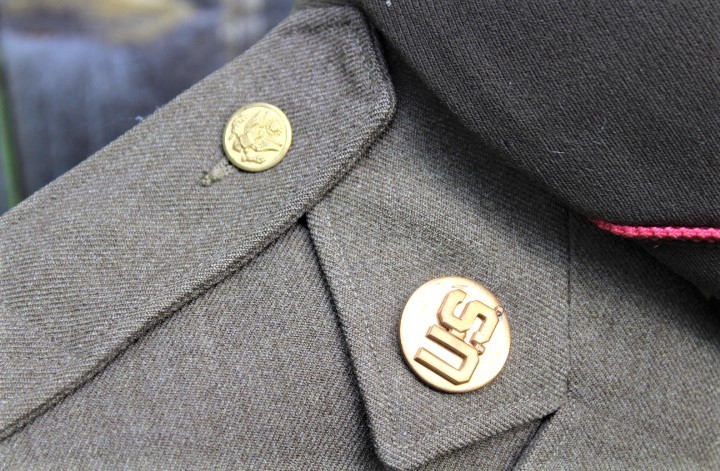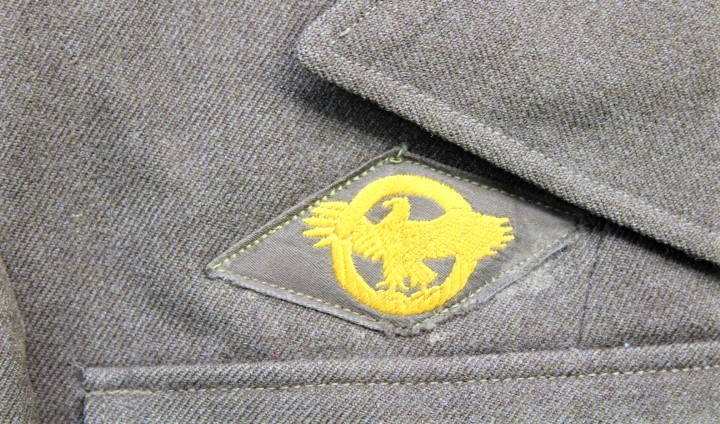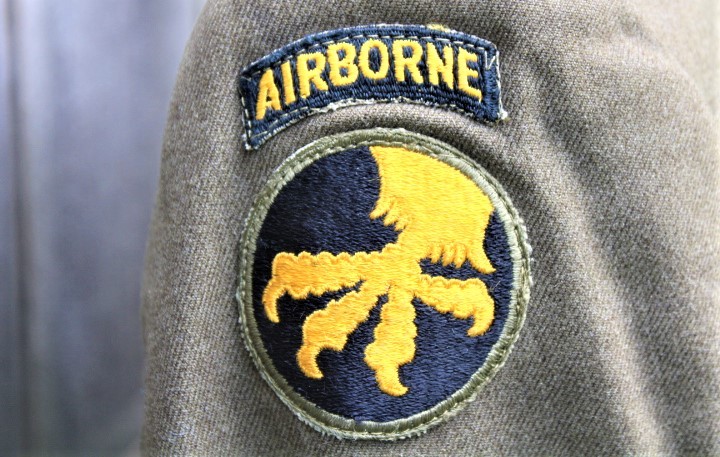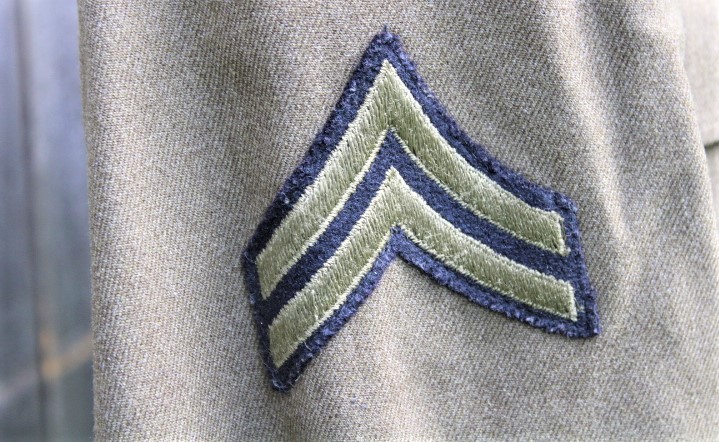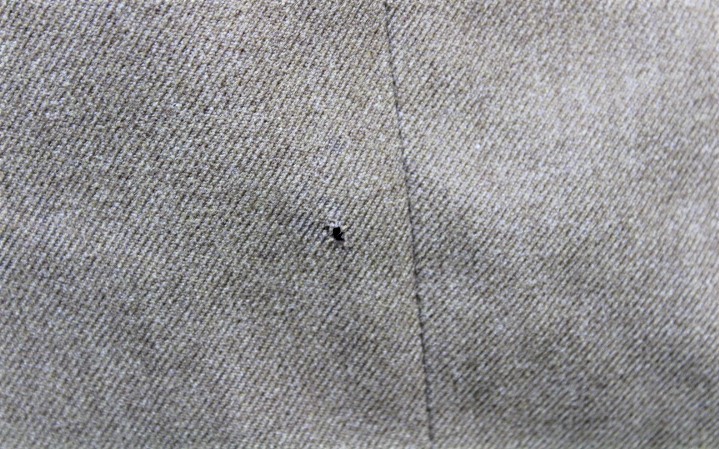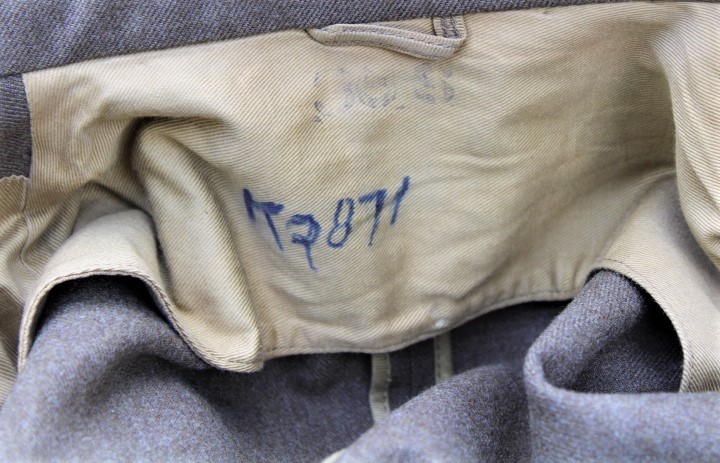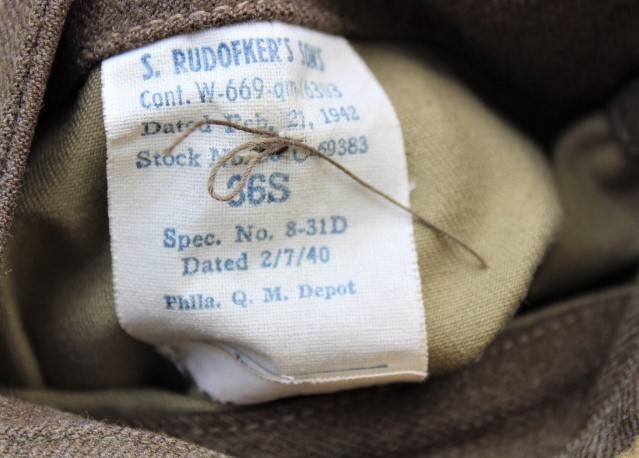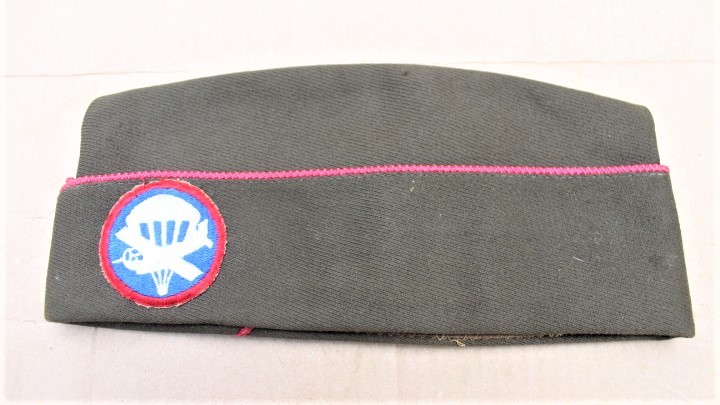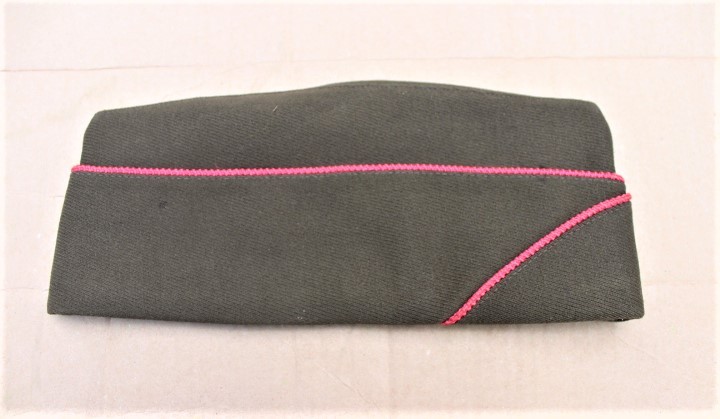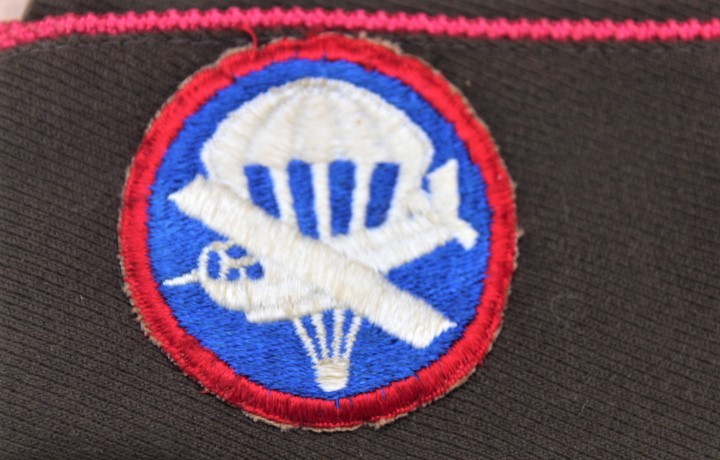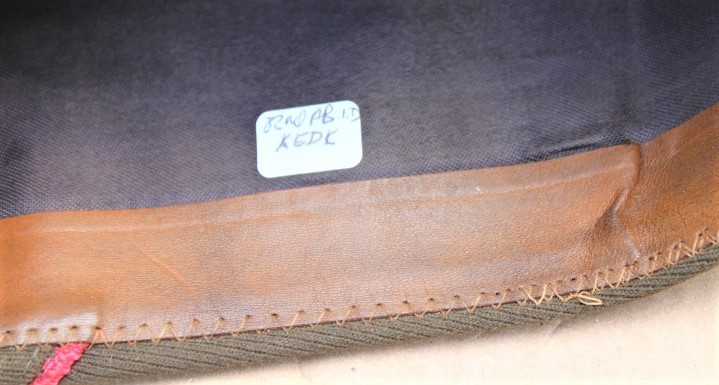Pattern 1940 Enlisted Dress Coat 319th Glider Field Artillery Battalion 82nd Airborne Division
Item #: WR738
Click on an image to enlarge
This is an unidentified Pattern 1940 enlisted dress coat used during World War II. This service coat replaced the one introduced in 1939. Made of 18 ounce olive drab serge wool fabric, enlisted service coats were dyed a shade of OD #33. The coat was worn with trousers made of the same material, and dyed the same shade of OD #33. To help give the soldier a little more freedom of movement while wearing this near form fitting coat, a set of pleats known as "bi swing backs" was added to the back of the coat. A pair of belt hooks was also utilized with a 1 1/2" half belt, which was replacing the leather service belt. This particular service coat has a contractors label sewn into the right lower pocket. The coat is partially lined and has no inner pocket, only the four exterior pockets. Inside the lower right pocket the Quarter Master tag is ink stamped "S. RUDOFKER'S SONS/Cont. W-669-qm-16303 /Dated Feb. 27, 1942/Stock No. 36-C-69383/36S/Spec. No. 8-31D/Dated 2/7/1940/Phila. Q.M. Depot" and the inspectors number and initials. The coat is very well made, coming out of the Philadelphia Quarter Master Depot. The epaulets have no distinctive unit insignia on them. The brass crossed cannons of the Artillery is on the left collar, and the brass US collar disc is on the right collar. There are six ribbons sewn above the left breast pocket, the Good Conduct Medal with four knots, the European African Middle Eastern Campaign Medal with one bronze arrow head and two campaign stars, the World War II Victory Medal, the National Defense Medal, the Army of Occupation Medal and the French Croix De Guerre Medal for WWII. There is an artillery airborne oval above the left pocket. The oval is pinned to the coat via the British made glider badge with the regimental numbers 319. The badge is back marked J.R. GAUNT/LONDON. The left sleeve has the 82nd Airborne Division patch securely sewn on at the shoulder. There are four overseas stripes sewn near the left sleeve cuff, along with one service stripe. The rank insignia of Corporal is sewn on both sleeves of the coat. The right sleeve has the 17th Airborne Division patch sewn on it. The "ruptured duck" for an honorable discharge is sewn above the right upper pocket. There is no moth damage on the coat. The stitching is strong and unbroken throughout the coat. All of the buttons are present and securely attached to the coat. The 319th Glider Field Artillery Battalion was activated on 25 March, 1942 as part of the 82nd Airborne Division at Camp Claiborne, Louisiana. The 319th was selected to support Colonel Darby's Rangers mission of holding the road open between Salerno and Naples during the invasion of Italy. The 319th landed by ship on 14 September, 1943 near Maiori, Italy and hauled their 105mm howitzers up the mountain roads in the early morning darkness. The men of the 319th Glider Field Artillery supported the Rangers for 10 days, outnumbered by as many as 8:1, including the crack Hermann Goering Division. They were reinforced on the 11th day by units of the US Fifth Army, which included the majority of the 82nd Airborne Division. The 319th would receive a Presidential Unit Citation for it's actions at Salerno. These glider borne artillerymen would distinguish themselves again at Normandy, fighting with 75mm pack howitzers and flying in inferior British Horsa gliders. Most of the 40 glider assault force crashed or broke apart on landing just outside of Ste Mere Eglise. For 37 consecutive days they supported the infantry of the 82nd Division. When finally relieved, the battalion had suffered 38 killed in action and another 143 wounded for a casualty rate of 45%. For it's actions during Operation Overlord the men of the 319th were awarded their second Presidential Unit Citation and the French Croix De Guerre with Palm. The men of the 319th Glider Field Artillery Battalion would distinguish themselves again during Operation Market Garden, firing over 34,000 rounds during the campaign to take the Nijmegen bridge and open the road to Arnhem. The battalion continued to perform masterfully, providing critical supporting fires during the Battle of the Bugle and in the Huertgen Forest. The only identification is a laundry number inked into the lining in the collar, K2871. His service coat, along with his overseas cap with glider patch have survived in good condition and will compliment any WWII uniform collection.
(Sold)
If you have ordered or are considering ordering an antique weapon or artifact from our website please be advised that these artifacts and antique weapons are sold strictly as collectible antiques.
We strongly recommends that these artifacts be enjoyed and appreciated for their historical significance and not ever fired. By ordering you are acknowledging these facts, warnings and assume full responsibility for your personal actions with regard to them.
We DO NOT sell modern firearms , all our inventory is pre 1898 and are classified by the ATF as antiques and require no government paperwork to own.
